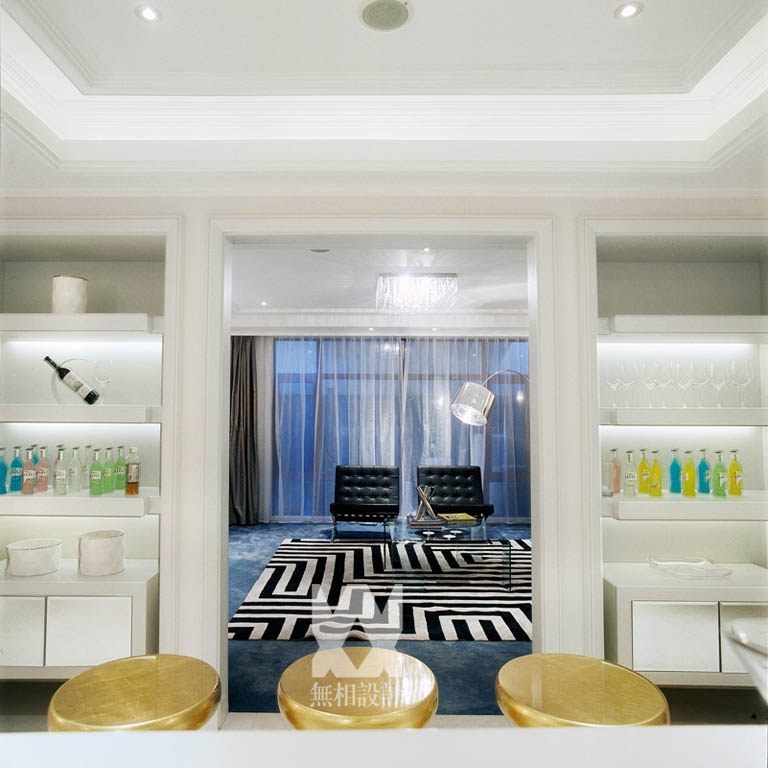Value Farm Thomas Chung
2014-02-17 21:00
架构师提供的文本描述。价值农场通过集体努力培育土地创造价值。该项目将城市转型、建筑和都市农业等问题与国际文化活动结合起来,探讨城市农业在城市中的可能性以及如何与社区建设相结合。它是2013年深圳双城双年展的一部分,位于深圳蛇口原广东玻璃厂内的OLE Bouman‘s Value工厂,该工厂本身正在进行彻底的改造。响应双年展的主题‘城市边界’和蛇口的后工业再生,价值农场是实现作为新的建筑和景观设计,为网站的未来提供永久性的基础设施,以及一个实质性的表演,不断增长的事件-建筑整个双年展。
Text description provided by the architects. Value Farm creates value by cultivating the land as a collective effort. The project intersects issues of urban transformation, architecture and urban agriculture with an international cultural event, and explores the possibilities of urban farming in the city and how that can integrate with community-building. It forms part of the Shenzhen Hong Kong Bi-city Biennale of Urbanism\Architecture 2013, within Ole Bouman’s Value Factory located at the Shekou Former Guangdong Glass Factory in Shenzhen, a site that is itself undergoing radical transformation. Responding to the Biennale’s theme of ‘Urban Border’ and Shekou’s post-industrial regeneration, Value Farm is realized as new architectural and landscape design providing permanent infrastructure for the site’s future as well as a substantial piece of performative, growing event-architecture throughout the biennale.
香港的设计灵感来自两方面。首先是城市密集城市屋顶农场蓬勃发展的趋势。除了在城市混乱之上创造一片绿色绿洲,重新将城市居民与自然联系起来,以及种植作物的治疗经验之外,城市农业还提供了更可持续、更安全、更容易获得的食物供应,并指出了一种态度、生活方式的改变。此外,在人口稠密的城市地区使用迄今尚未开发的“人工土地资源”(屋顶)作为生产性地形,可以改善小气候,具体应对当代生态需求,而不仅仅是用节能的特点和设备,如垂直绿化,来增强“可持续性”。
The design inspiration from Hong Kong is twofold. First is the trend of flourishing rooftop farms in the city’s dense urbanity. Besides creating a green oasis above the urban chaos, reconnecting city dwellers with nature and the therapeutic hands-on experience of growing crops, urban farming offers a more sustainable, secure, accessible food supply as well as pointing to an attitude, lifestyle change. Moreover, the use of hitherto untapped ‘artificial land resource’ (rooftops) in dense urban areas as productive terrain can improve the micro-climate, respond concretely to the contemporary ecological imperative beyond dressing up “sustainability” with energy-saving features and devices such as vertical greening.
其次是中心区170年历史悠久的格雷厄姆街湿市场区的活跃的城市土话,其低矮的结构体现了城市的细粒变形。该分局目前正面临着大规模的重新开发,并有可能根除城市自我发展的空间文化实践网络。价值农场投机取巧,将整个被拆除的湿市场街区的屋顶变成了农田。大自然是从香港的城市历史中重新挖掘出来的;屋顶结构被视为“新土地”,以培育一个可行的后城市未来。
Second is the lively urban vernacular of the Central district’s 170 year-old Graham Street wet market precinct, whose low-rise fabric embody the city’s fine-grain metamorphosis. The precinct is currently facing wholesale redevelopment and with it the potential eradication of the city’s self-evolving meshwork of spatio-cultural practices. Value Farm speculates retroactively turning rooftops of an entire demolished wet market block into farming terrain. Nature is excavated anew from Hong Kong’s urban past; rooftop configurations are taken as “new ground” to cultivate a viable post-urban future.
这个概念被移植到工厂内的一个2,100平方米的露天场地上,作为“试验场”。砖围被抽象和压缩的“屋顶耕作地”,其不同高度允许不同的土壤深度为不同的作物。原来的楼梯核心被转换成砖平台和开放的展馆,以适应未来的活动。增加了集自然地下水源的灌溉池、综合喷水系统、苗圃、投影室和展览设施。
The concept is transplanted onto a full-scale 2,100m2 open site within the factory premises as “test ground”. Brick enclosures are abstracted and compressed “rooftop farming plots” whose different heights allow varying soil depths for different crops. Original stair cores are converted into brick platforms and open pavilions to accommodate future activities. An irrigation pond collecting the site’s natural underground water source, an integrated sprinkler system, nursery as well as projection room and exhibition facilities are added.
价值农场不把“景观”当作一种被动的、超然的“土地观”,而是强调治疗法的转变。该遗址的现有特征被揭示,如旧墙和大树被救赎并赋予新的生命,天然地下水等资源通过挖掘新的灌溉池收集起来,并简单地用挖掘出来的大岩石装饰它。与价值工厂在双年展厂房内新生产的“文化”相呼应,价值农场改造场地,生产“自然”,恢复了土地的繁殖力。引用自我依赖的修道院生活方式的类比,该网站也被概念化为一个封闭的花园配置为农业和物理耕作。
Instead of treating “landscape” as a passive, detached ‘view of the land’, Value Farm emphasizes curative transformation. The site’s existing qualities are revealed, features such as old walls and large trees redeemed and given new life, resources such as the natural underground water are gathered by digging a new irrigation pond, and simply decorating it with the large rocks uncovered by the excavation. Resonating with the Value Factory’s new production of ‘culture’ within the factory buildings for the Biennale, Value Farm reworks the site to produce “nature”, reviving the land’s fecundity. Invoking the analogy of the self-reliant convent lifestyle, the site is also conceptualized as an enclosed garden configured for farming and physical cultivation.
Transplanting post-urban values
除了为“价值农场”的设计注入概念灵感外,还注入了香港特色、种子和劳动力,以实现生产绩效。混合作物反映了香港人的另类和健康品味,同时解决了食品安全和可达性、城市可持续性和自给自足等问题。除了兴建和维持农场外,政府亦举办了多项大型活动,例如播种、品酒及市场节等,以鼓励本地市民、社区团体、专业人士及访客参与跨境交流。香港的后城市价值是通过生产绿色、食品、气味和味道,以一种引人入胜和最意想不到的方式体现出来的。
Besides conceptual inspiration for Value Farm’s design, Hong Kong character, seeds and workforce are injected to realize a productive performance. Hybrid crops reflect Hong Kongers’ alternative and healthy taste, while addressing food safety and accessibility, urban sustainability and self-sufficiency. Apart from creating and maintaining the farm, major events such as Sowing, Tasting and Market Festivals are organised to nurture cross-border exchange engaging local citizens, community groups, professionals and visitors. Hong Kong’s post-urban value is demonstrated via producing green, food, smell and taste in an engaging and most unexpected way.
在深圳恢复废弃的工业用地的同时,价值农场为所有人提供新鲜的营养。有着丰富的当地热情,得到社区团体的大力支持,并受到媒体的欢迎,价值农场有很大的机会能够永久地忍受和改造这个网站,继续为所有人创造新的价值。更重要的是,它可以作为进一步推广这样一种生活的、参与性的城市农业活动建筑的表演组合的试验平台。
While revalorizing disused industrial land in Shenzhen, Value Farm cultivates refreshing nourishment for all. With abundant local enthusiasm, well-supported by community groups and well-received by the media, there is every chance Value Farm can endure and convert the site permanently to continue producing new value for all. More importantly, it can serve as a test-bed for further propagations of such a performative ensemble of living, participatory, urban farming-event-architecture.
 举报
举报
别默默的看了,快登录帮我评论一下吧!:)
注册
登录
更多评论
相关文章
-

描边风设计中,最容易犯的8种问题分析
2018年走过了四分之一,LOGO设计趋势也清晰了LOGO设计
-

描边风设计中,最容易犯的8种问题分析
2018年走过了四分之一,LOGO设计趋势也清晰了LOGO设计
-

描边风设计中,最容易犯的8种问题分析
2018年走过了四分之一,LOGO设计趋势也清晰了LOGO设计












.jpg)

























































.jpg)



.jpg)





























